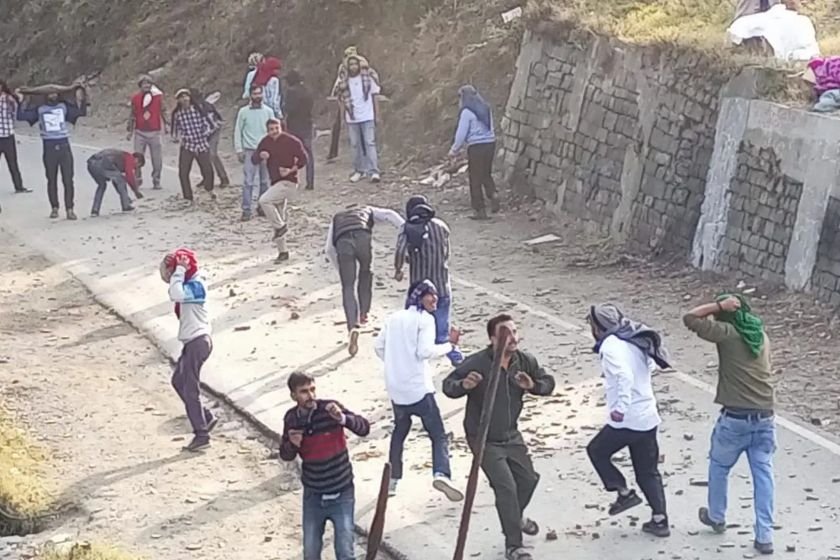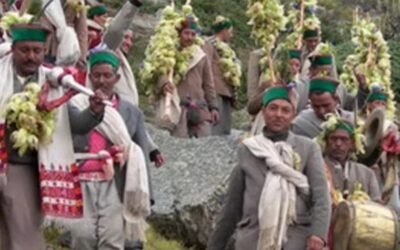📍 Location: Dhami Village, ~28 km from Shimla Town, Himachal Pradesh
📅 Season: October, immediately after Dussehra (on the next Sunday)
A ritual battle fought with stones, recalling ancestral bravery and sacred protection
🔱 The Legend Behind the Stone Skirmish
The Pathar Ka Khel (Game of Stones) isn’t just a spectacle—it’s a living echo of sacrifice and divine intervention. According to local legend, this tradition commemorates a royal tragedy when a Dhami ruler was fatally injured during Dussehra celebrations in the 18th century. The stone ritual emerged as an act of purification, community grief, and spiritual resolution, turning conflict into a culturally encoded ceremony.
🧿 The practice is seen as a symbolic offering to the deity—honoring valor while invoking protection for future harvests and harmony.
🪨 Ritual Combat – Not for the Faint-Hearted
Held in an open field near the village temple:
- Two groups of villagers face each other across the arena, armed with smooth, hand-sized pebbles
- Stone throwing begins in controlled rhythm, lasting only a few minutes, supervised by priests and elders
- Injury is considered auspicious, as bloodshed is believed to please the deity and strengthen village bonds
- A designated temple priest signals the start and end, ensuring tradition outweighs aggression
Local men wear white turbans and dhotis, and no shields are used—underscoring faith in ancestral power.
🎶 Ceremony, Community & Closure
Before and after the stone ritual, the village immerses in:
- Pujas and Processions: Honoring local deities, especially those associated with bravery and harvest
- Folk Performances: Nati dances, local storytelling sessions, and hymns sung for protection
- Feasting: After the event, villagers share madra, chana, and sweet dishes in open courtyards—symbolizing restored harmony
⚖️ While dramatic, the entire ritual is highly regulated, and modern first-aid and safety measures are now part of the tradition.
✨ Why Pathar Ka Khel Persists
Though controversial to outsiders, it remains a vital part of Dhami’s cultural identity:
- Honors historical memory and spiritual resilience
- Reflects local beliefs about sacrifice, protection, and purification
- Preserves a sense of community through symbolic conflict and healing
It’s a ritual of paradox: aggression transformed into reverence, injury seen as a bond.
🧭 Plan Your Visit
- Best Time: Sunday following Dussehra (October); dates vary each year
- How to Reach: Dhami is ~28 km from Shimla via road; taxis or buses available
- Stay Options: Guesthouses in Shimla or nearby rural homestays for immersion
- Travel Tip: Be respectful—ask locals before photographing or participating; women and visitors usually observe from a safe distance




